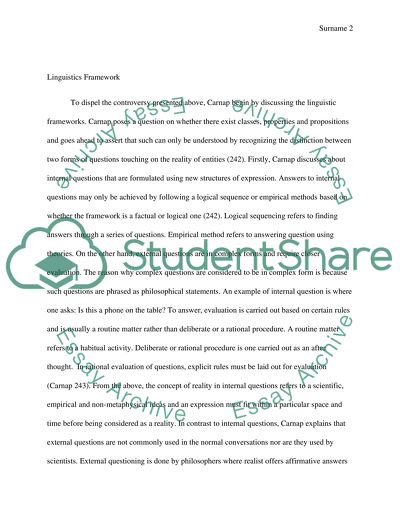Cite this document
(Abstract Entities in Semantics Essay Example | Topics and Well Written Essays - 2000 words, n.d.)
Abstract Entities in Semantics Essay Example | Topics and Well Written Essays - 2000 words. https://studentshare.org/humanitarian/1602513-carnap-empiricism-semantics-and-ontology
Abstract Entities in Semantics Essay Example | Topics and Well Written Essays - 2000 words. https://studentshare.org/humanitarian/1602513-carnap-empiricism-semantics-and-ontology
(Abstract Entities in Semantics Essay Example | Topics and Well Written Essays - 2000 Words)
Abstract Entities in Semantics Essay Example | Topics and Well Written Essays - 2000 Words. https://studentshare.org/humanitarian/1602513-carnap-empiricism-semantics-and-ontology.
Abstract Entities in Semantics Essay Example | Topics and Well Written Essays - 2000 Words. https://studentshare.org/humanitarian/1602513-carnap-empiricism-semantics-and-ontology.
“Abstract Entities in Semantics Essay Example | Topics and Well Written Essays - 2000 Words”. https://studentshare.org/humanitarian/1602513-carnap-empiricism-semantics-and-ontology.


